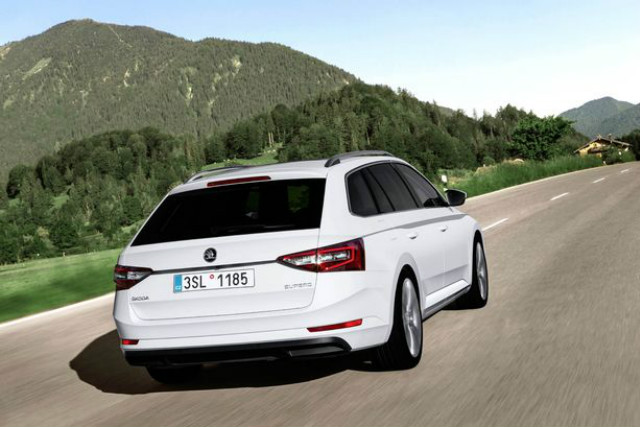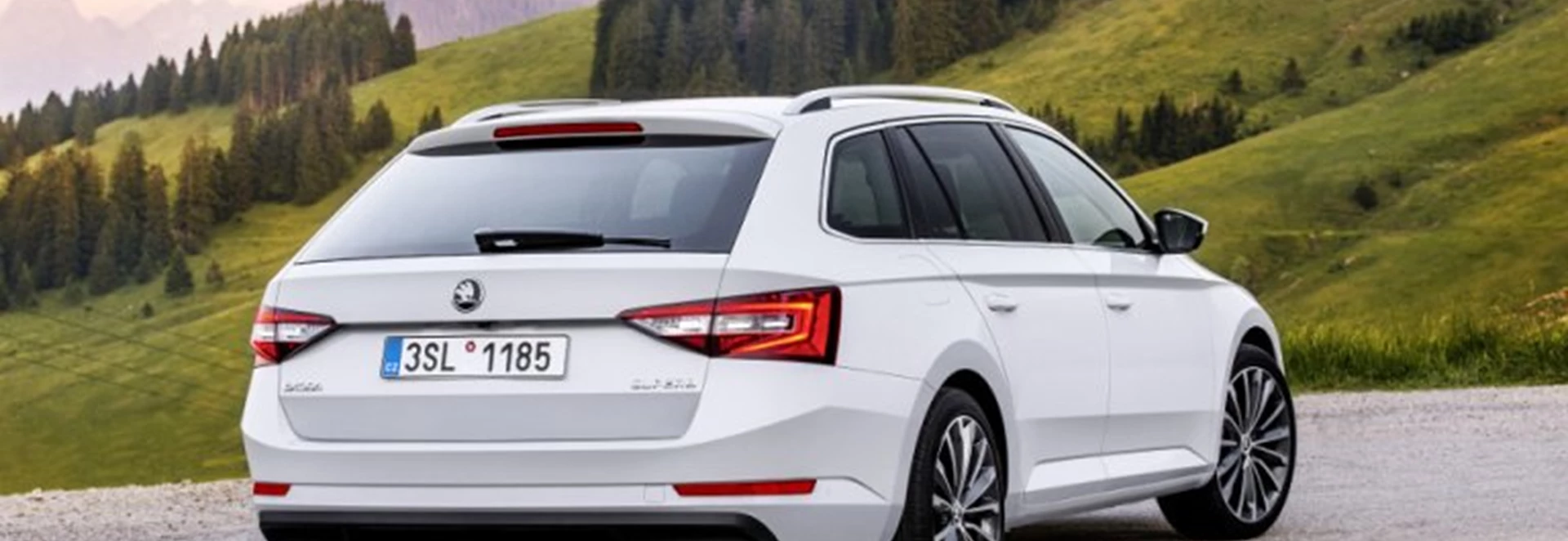Right from the introduction of the original model, one of the primary selling points of the Skoda Superb has been its interior space. This applies to the new third-generation model more than either of the previous ones. The hatchback is already incredibly roomy, but the estate tested here is something else again.
With the rear seats up, the luggage capacity is 660 litres. Fold them down, and it increases to 1,950, an 85-litre advance over the previous model. To put those figures into context, the Audi A6 Avant offers between 565 and 1,680 litres load capacity. For the BMW 5 Series Touring it’s 560 to 1,670 litres and the Mercedes E-Class Estate offers 600 to 1,855 litres. The Ford Mondeo Estate, much closer to the Skoda's pricing than any of the others mentioned here, has 500 to 1,605 litres.
Of course, it would be easy to provide more luggage space than your rivals simply by building a larger car, but Skoda hasn't done that. The Superb is actually slightly shorter than all the cars referred to in the previous paragraph. As an example of packaging, this is quite remarkable.
If it has been achieved by reducing passenger room, there's little sign. It's not so much that you can fit four six-foot adults in the Superb - that should be expected in this class. It's more that they would all have room to spare, and could be transported in comfort for hundreds of miles at a time.
That's not just because of the space. The suspension is very soft but quite well damped - not enough for really difficult roads, perhaps, since the Superb can become slightly confused on those, but certainly on averagely surfaced ones. Noise levels are generally low, the 2.0-litre diesel engine soon quietening down after a growly period when it's not yet up to operating temperature.

This is the larger and more powerful diesel engine in the range, producing a maximum of 148bhp. 0-62mph takes 8.9 seconds, though mid-range pull isn't particularly impressive, so the car can sometimes feel slower than it actually is. Fuel economy with the slick-shifting six-speed manual gearbox is 58.9mpg on the combined cycle.
The driving experience is decent enough, though you do need to apply a light touch to the major controls. Steering inputs need to be gentle for a smooth turn-in, and it takes a little while to get used to how much braking effect is produced during the first inch of pedal travel.
Most Superbs other than the entry-level S come with two umbrellas, one stowed neatly in each of the front doors - a brilliant idea which I hope other manufacturers will take note of. The SE L Executive specification being tested here is the second highest, one below Laurin & Klement. It includes 18-inch alloy wheels, leather upholstery, heated front seats and an electrically operated tailgate. The latter can be persuaded to open by waggling your foot under the rear bumper if your hands are full of luggage.
Additional kit in this car includes dual-zone air-conditioning, front and rear parking sensors and a more upmarket satellite navigation system than the one fitted to lesser models.
For all that, Skoda is charging £26,320, a sum that would not even get you close to buying the Audi, BMW or Mercedes mentioned above (though cheaper diesel Mondeos of similar output are available). Sure, most fans of the premium German models would take some persuading to switch to a Skoda. However, that doesn't alter the fact that the Superb is an impressively inexpensive car for its size and quality.




